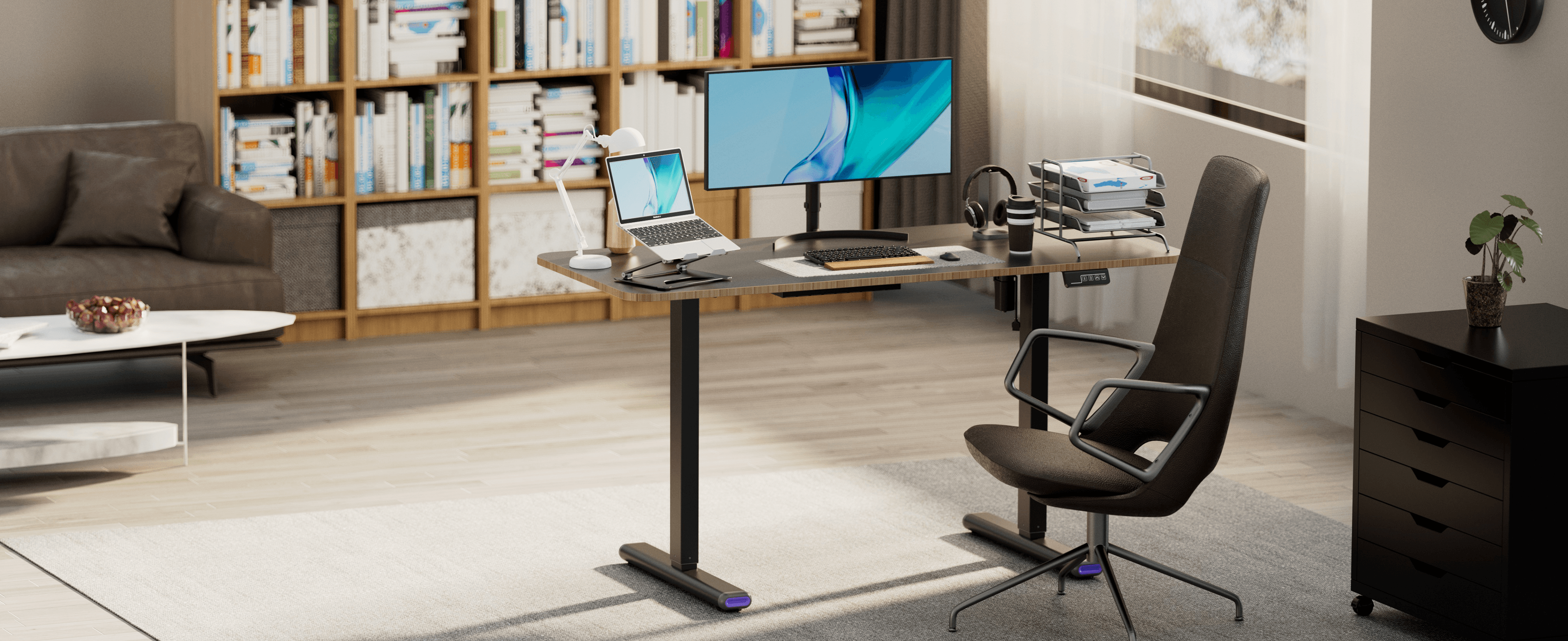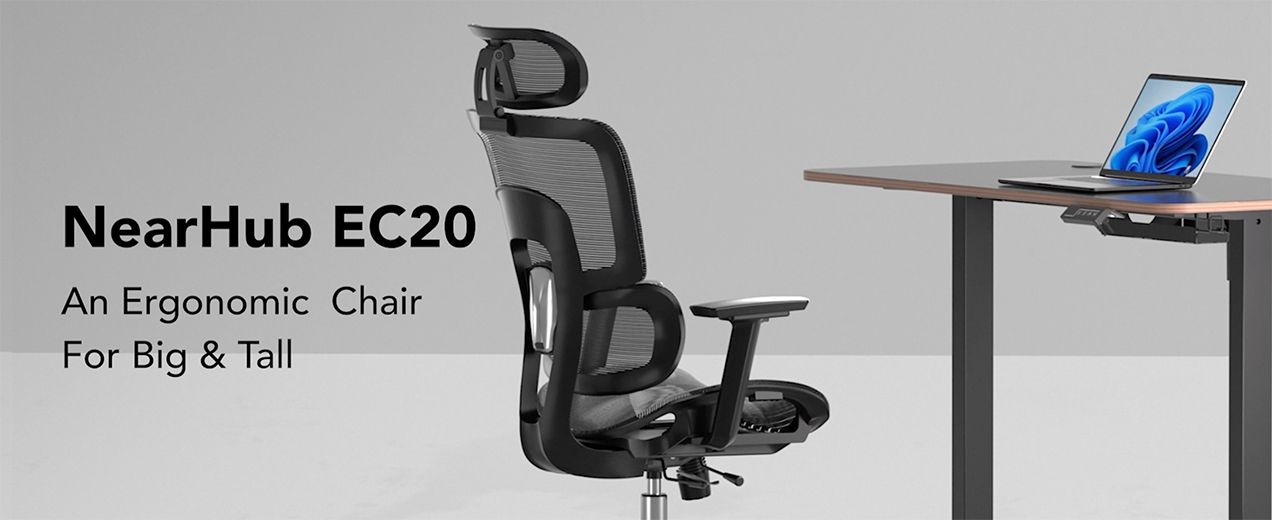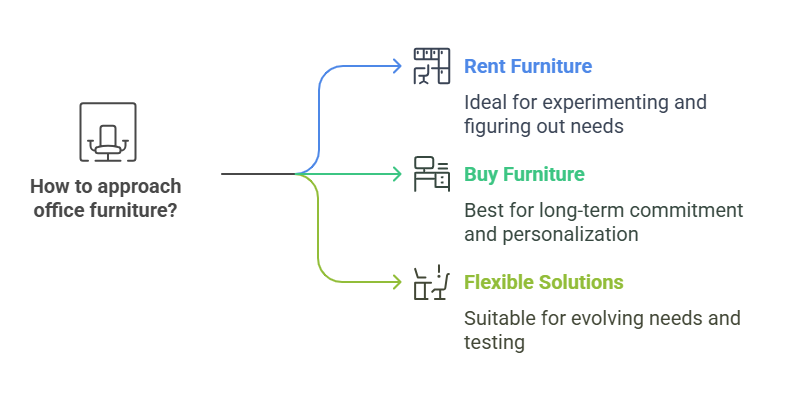In 2025, choosing between renting and buying office furniture isn’t just a financial decision—it’s a strategic one. This guide explores when it makes sense to rent office furniture, when it’s smarter to buy, and how flexible office furniture solutions can blend both worlds. With personal insights, real-world examples, and trending ergonomic setups, this post is your go-to resource for building a comfortable, scalable, and budget-smart office.
“Should I Rent or Buy Office Furniture in 2025?”
You’re staring at your blank office space wondering: Do I go all in and buy office furniture, or should I rent office furniture for now and keep it flexible? 🤔
Trust me, I’ve been there. When I first transitioned to working from home full-time, I had no clue what kind of office furniture solutions I needed—let alone if I should own them. 🛋️
Now, a few years (and chair upgrades 🪑→🪑) later, I’ve learned what works and what doesn’t. ✅❌
Let’s break it all down so you can confidently decide what makes sense for your workspace in 2025. 📊
Why Rent Office Furniture? (Spoiler: It’s Surprisingly Smart)
Renting office furniture has become wildly popular in 2025, especially for remote workers, startups, and hybrid teams. Why? Because it gives you freedom. Real, practical, move-your-furniture-next-month kind of freedom.
When It Makes Sense to Rent:
- You’re in a temporary space or still settling in
- You want to test products before committing
- You need quick, scalable office furniture solutions
Benefits of Rent Office Furniture Options:
- Low upfront investment
- No long-term commitment
- Built-in flexibility (swap stuff out anytime)
- Great for startups or growing teams
When I launched my small marketing agency, renting let me experiment. I swapped out a basic desk for a desk 20 inches deep and upgraded to a comfier chair without buyer’s remorse.

And the best part? I didn’t have to store, move, or resell anything later. Renting gave me the breathing room to figure it all out.
Buying Office Furniture: Invest in Comfort and Stability
If you’ve found your forever office—or you're serious about long-term comfort—buying office furniture may be your best bet. It’s an investment, sure, but one that pays off in durability, control, and design consistency.
Why I Chose to Buy:
After months of lower back pain (yep, the struggle is real), I invested in a small comfortable office chair that finally supported my posture. I also added an under desk mount keyboard tray to improve ergonomics.

Now? I’m more productive—and my back actually thanks me.
Perks of Buy Office Furniture Options:
- Long-term savings
- Higher quality materials
- You own it (no return hassles)
- More design flexibility and customizations
Buying also means you’re not tied to someone else’s rental schedule. You set the tone, the vibe, the comfort level. It’s your space.
Flexible Office Furniture Solutions for 2025 Work Styles
Let’s be real: most of us aren’t working traditional 9–5s in a static office anymore. That’s where flexible office furniture solutions come in.
Whether you’re part of a hybrid team, a freelancer, or a growing company, modular setups and hybrid plans (like rent-to-own) make it easier than ever to find your groove without locking yourself in.
Why Flexible Office Furniture Rocks:
- You can rent and buy (mix it up!)
- Modular designs fit evolving teams
- Rent-to-own plans offer the best of both worlds
My teammate Mike is 6'4" and had a hard time finding the right chair—until he tested a tall work chair. He started with a rental, loved it, and ended up buying it. That’s flexible office furniture solutions in action.

Real-Life Scenarios: When Renting Wins (And When Buying Does)
Let’s get into real-world examples. This is how office furniture solutions play out when you factor in timeline, budget, and team growth.
| Situation | Rent Office Furniture | Buy Office Furniture |
|---|---|---|
| Short-term lease | ✅ | ❌ |
| Tight upfront budget | ✅ | ❌ |
| Home office setup | ❌ | ✅ |
| Want full control over style | ❌ | ✅ |
| Scaling a new team fast | ✅ | ❌ |
| You’ve found your forever space | ❌ | ✅ |
Honestly? There’s no “wrong” answer. It depends on your goals—and how often you like to change things up.
2025 Trends: Office Furniture Solutions Go Hybrid
You’ve probably noticed a theme here: flexibility. That’s the future of work—and furniture. In 2025, even major suppliers are now offering flexible office furniture solutions that adapt as you do.
Some cool trends I’ve seen:
- Rent-to-own plans (test, then buy)
- Subscription furniture services
- Adjustable desks + ergonomic add-ons
- Multi-use spaces with modular furniture
This new wave of office furniture solutions makes it way easier to personalize your space without overcommitting.
FAQs About Office Furniture in 2025
Q: What’s the best option for a hybrid team?
A: Go flexible! Renting some items while buying others gives your team room to evolve. Think of flexible office furniture solutions like a buffet—you don’t have to choose just one thing.
Q: Is renting furniture expensive over time?
A: It can be, depending on how long you need it. If you’re staying put for over 12 months, it might be worth it to buy office furniture instead.
Q: How do I return rented items?
A: Most providers offer free or low-cost pickup, especially with short-term rent office furniture plans.
Q: Is there a way to combine renting and buying?
A: Absolutely! That’s the beauty of flexible office furniture solutions—mix and match to fit your timeline and budget.
Q: Is it worth investing in ergonomic add-ons?
A: Yes. Even if you rent office furniture, you can still buy upgrades like keyboard trays or standing desk converters. Ergonomics matter!
My Final Take: How to Choose the Right Office Furniture Solution
Here’s my honest advice—don’t overthink it. Start with where you are today.

- If you’re figuring things out, rent office furniture and experiment.
- If you’re all-in on a long-term space, buy office furniture and make it yours.
- If you’re somewhere in between? Lean into flexible office furniture solutions that let you test, adjust, and evolve as you go.
No one builds the perfect workspace overnight. But in 2025, we finally have the tools to make it work—on our terms.











































